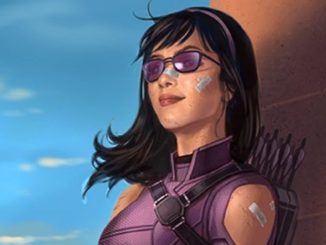
When the clock struck midnight on August 15, 1947, a newly free India stepped into the unknown-scarred by Partition, burdened by poverty, yet fuelled by an unyielding spirit. As Pandit Nehru spoke of the nation’s “tryst with destiny,” few could have imagined that within eight decades, this struggling colony would emerge as a global powerhouse-economically dynamic, technologically advanced, and democratically resilient.
But progress has not been even. India’s post-independence journey has been a tale of two realities: extraordinary achievements on one hand, and stubborn challenges on the other.
Achievements: Building a Modern Nation
Democracy: India’s Greatest Triumph
Universal Adult Franchise from Birth: Unlike many new nations that restricted voting to the educated or wealthy, India trusted its citizens fully. Every adult, regardless of caste, gender, or literacy, had a vote.
Stable Democratic Institutions: Over seventeen general elections and hundreds of state polls, India has witnessed peaceful transfers of power-even after deeply divisive campaigns.
Robust Judiciary and Free Press: The Supreme Court‘s power of judicial review and an independent media have kept governments in check. Historic judgments-from Kesavananda Bharati (1973) protecting constitutional supremacy to Navtej Johar (2018) decriminalizing homosexuality-reflect India’s evolving social contract.
Innovation in Electoral Processes: Electronic Voting Machines, Voter ID programs, and massive voter awareness drives have made India’s electoral process both efficient and inclusive.
Agricultural Transformation:
From Famine to Surplus
Green Revolution (1960s-70s): Led by M. S. Swaminathan and supported by Prime Minister Lal Bahadur Shastri’s call to “Jai Jawan, Jai Kisan,” India introduced high-yield crop varieties, irrigation expansion, and fertilizer use.
Result: India went from importing food under PL-480 aid programs to self-sufficiency in grain production by the 1970s, and today is a leading global exporter of rice and wheat.
White Revolution: Operation Flood, spearheaded by Verghese Kurien, transformed India into the largest producer of milk, empowering rural farmers.
Economic Growth and Global Integration
 Planned Economy to Liberalization: Post-independence India followed Nehruvian socialism, building public-sector heavy industries, dams, and premier institutions (IITs, AIIMS).
Planned Economy to Liberalization: Post-independence India followed Nehruvian socialism, building public-sector heavy industries, dams, and premier institutions (IITs, AIIMS).
– 1991 Economic Reforms: Facing a severe foreign exchange crisis, PM P. V. Narasimha Rao and Finance Minister Manmohan Singh dismantled the License Raj, liberalized trade, and attracted foreign investment.
– Results: GDP growth accelerated, millions entered the middle class, and India emerged as a hub for IT, outsourcing, and software exports. By 2023, India became the fifth-largest economy globally.
– Digital India Revolution: In the 2010s, Aadhaar biometric ID, UPI payment systems, and massive telecom penetration brought financial inclusion to millions, changing everyday life.
Science, Technology and Strategic Power
Space Achievements:
– Aryabhata (1975)-first satellite launch.
– Mangalyaan (2014)-world’s lowest-cost Mars mission.
– Chandrayaan-3 (2023)-soft landing on Moon’s south pole.
– Nuclear and Defense Programs: India developed indigenous nuclear capability (Smiling Buddha test in 1974, Pokhran-II in 1998) and built advanced missiles under the Integrated Guided Missile Development Program.
– Healthcare and Pharma: India became known as the “pharmacy of the world”, supplying affordable medicines and vaccines globally, particularly during the COVID-19 pandemic.
Social Justice and Inclusion
– Abolition of Untouchability (Article 17): Legal equality laid the foundation for social reforms.
– Affirmative Action: Reservations in education and employment uplifted Scheduled Castes, Tribes, and OBCs.
– Education Expansion: Literacy rose from 12% in 1947 to over 77% today, driven by schemes like Sarva Shiksha Abhiyan and Mid-Day Meals.
– Women in Leadership: From Indira Gandhi to President Droupadi Murmu, women have assumed the highest offices, while legal reforms improved inheritance, workplace equality, and political participation.
Challenges: The
Unfinished Agenda
– Poverty, Inequality, and Unemployment
– Progress but Uneven: Extreme poverty dropped sharply-from 45% in 1983 to under 10% today-yet income inequality has widened, with wealth concentrated among a few.
– Jobless Growth: While GDP has surged, employment generation has lagged, creating frustration among India’s vast youth population.
Population Pressure and
Infrastructure Deficit
– Demographic Dividend at Risk: India’s young workforce (median age \~28) could fuel economic growth-but only with adequate jobs, skills, and infrastructure.
– Urban Overcrowding: Cities like Delhi and Mumbai face congestion, housing shortages, and pollution, reflecting planning gaps.
Governance and Corruption
– Institutional Weaknesses: Despite RTI laws and digital transparency, high-profile scams (Bofors, 2G spectrum, coal allocations) have eroded public trust.
– Bureaucratic Inefficiency: Delays, red tape, and inconsistent policies continue to discourage investment and reforms.
Social Harmony Under Strain
– Caste, Religious, and Regional Tensions: Violence, discrimination, and political polarization challenge the vision of “unity in diversity.”
– Need for Inclusive Nationalism: Social cohesion must rise above divisive rhetoric to ensure long-term stability.
Environmental and Climate Crisis
– Pollution and Resource Stress: India is home to some of the most polluted cities, and rivers like the Ganga remain under stress despite cleanup efforts.
– Climate Vulnerability: Erratic monsoons, droughts, and heatwaves threaten agriculture and health. Sustainable energy and urban planning are critical for the future.
The Road Ahead: Vision for 2047
As India approaches its centenary of independence in 2047, the nation has set an ambitious goal: to become a developed country. Achieving this vision requires a multi-pronged strategy:
Inclusive Economic Growth
– Invest heavily in education, vocational training, and entrepreneurship to turn the youth bulge into a demographic dividend.
– Strengthen manufacturing through initiatives like Make in India and build global supply chain integration.
Good Governance and
Institutional Strengthening
– Deepen transparency using e-governance, AI-powered services, and judicial reforms.
– Ensure federal balance, empowering states to innovate while maintaining national cohesion.
Sustainable Development
– Aggressively expand renewable energy (solar, wind) to meet climate goals.
– Implement urban reforms to create smart, liveable cities with better public transport and waste management.
Social Harmony and Equality
– Expand affirmative action into quality education and skill-building programs, not just quotas.
– Promote dialogue, cultural exchange, and inclusive nationalism to reduce caste and communal divides.
Global Leadership
– Use India’s position in G20, BRICS, and the Quad to shape global economic, security, and climate policies.
– Leverage India’s soft power-Bollywood, yoga, diaspora, IT leadership-for cultural diplomacy.
A Nation Still in Motion
India’s journey since 1947 is a testament to resilience. From a country battling famine to a spacefaring power and global economic leader, its achievements are undeniable. Yet, poverty, inequality, and social divisions remind us that independence is not a destination but an ongoing project.
As the world’s largest democracy marches toward its centenary, India must marry growth with justice, modernity with tradition, and power with compassion. The promise of 1947 still shines bright-waiting to be fully realized by 2047.





Be the first to comment